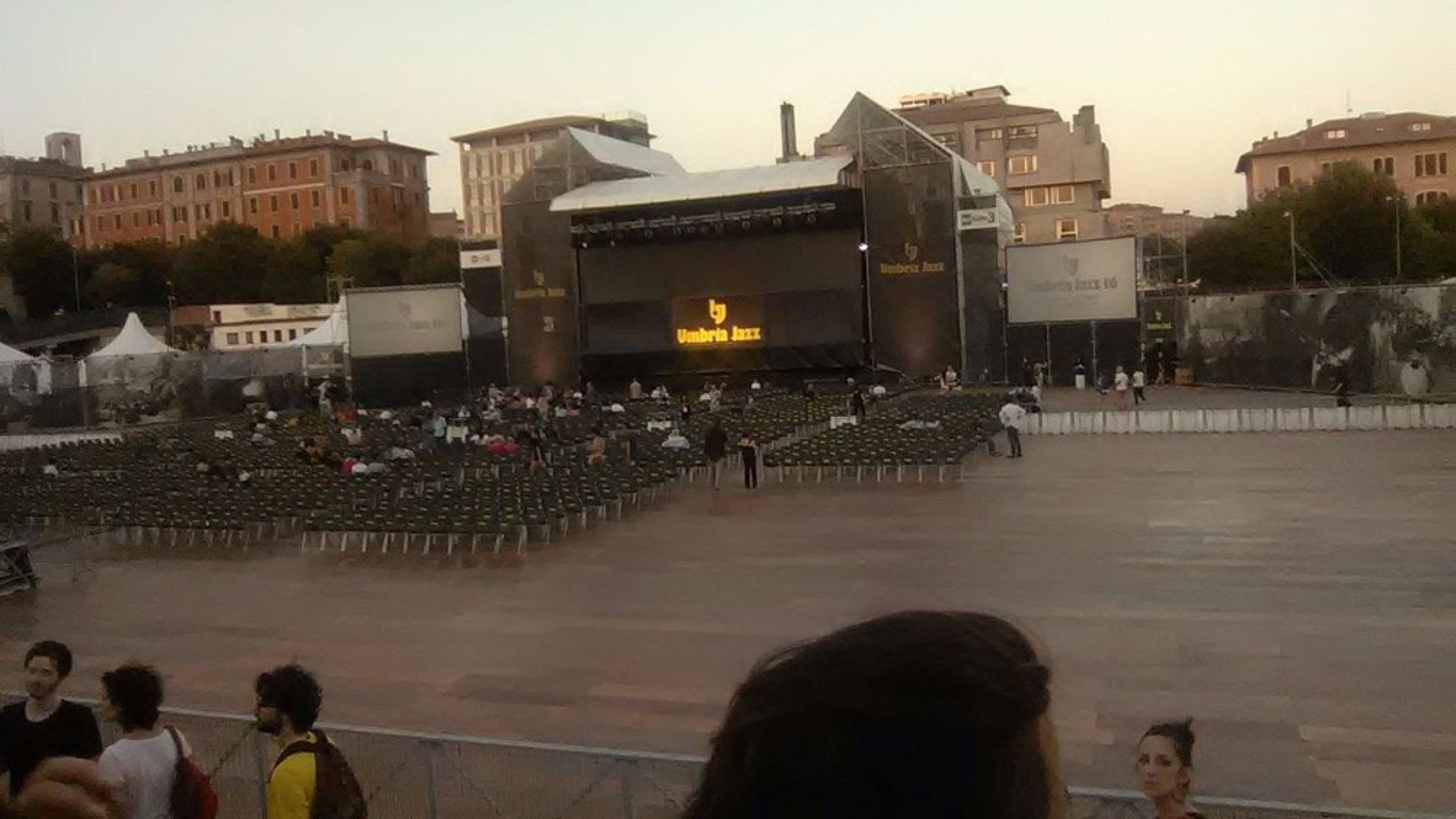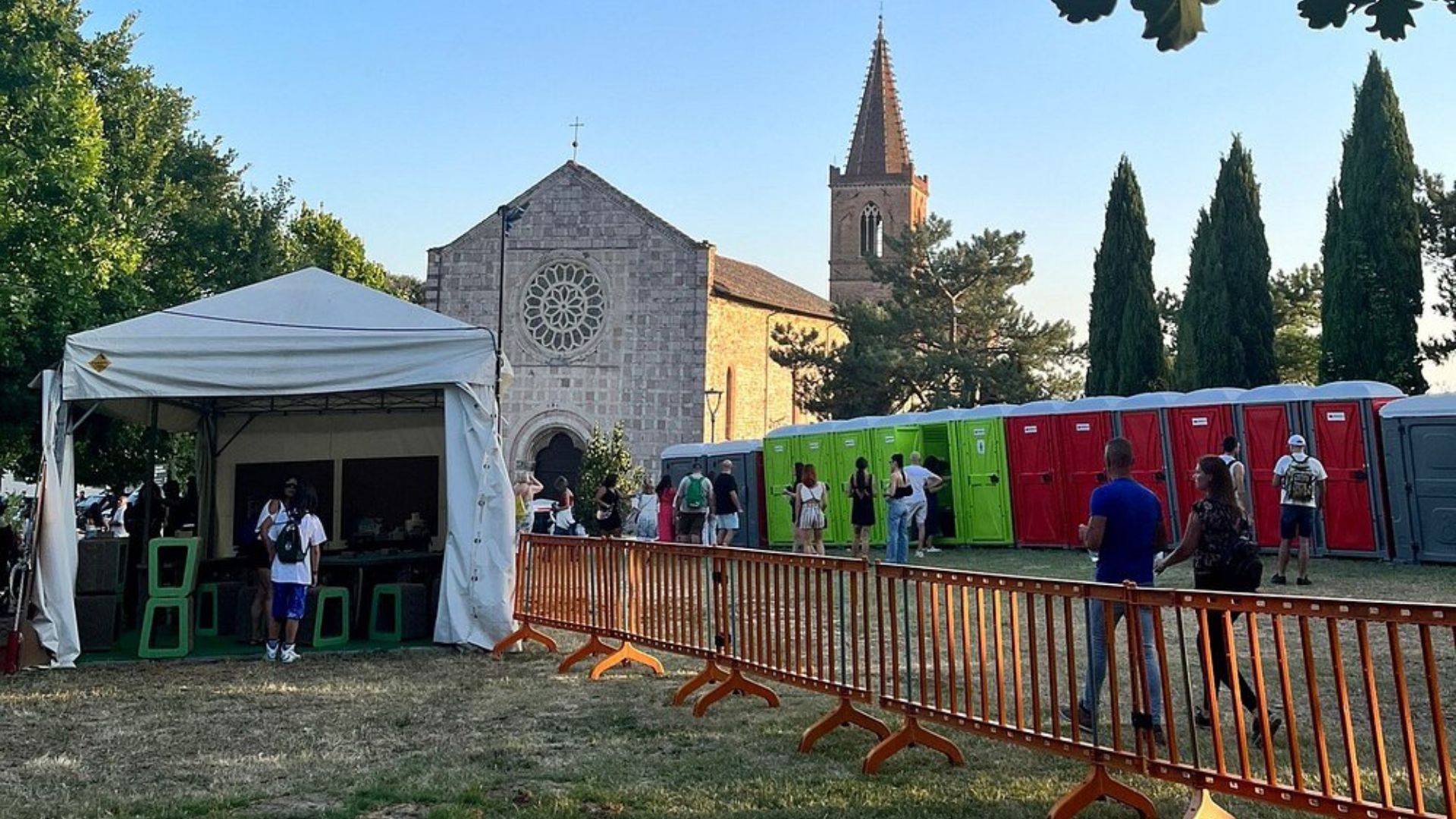I still remember the first time the smooth notes of a saxophone filled the medieval streets of Perugia during Umbria Jazz. There’s something magical about standing in a city that dates back centuries while contemporary jazz rhythms bounce off ancient stone walls.
Umbria Jazz Festival transforms the heart of Italy into a playground of musical expression, where world-class artists perform in settings so historically rich you can almost feel time collapsing around you.
The festival spreads throughout Perugia like a musical feast, from main stages in grand piazzas to intimate performances in hidden corners of the old town.
As evening fell, I found myself wandering the narrow cobblestone pathways, following the sound of a trumpet that led me to a small courtyard concert I hadn’t planned to attend. That’s the beauty of Umbria Jazz—some of the most memorable moments come unexpectedly.
Walking between venues, I couldn’t help but marvel at the contrast between medieval Umbrian architecture and the thoroughly modern sounds filling the air.
One moment I was admiring 13th-century facades, and the next I was swaying to Latin jazz rhythms from performers like Pedrito Martinez. This blend of old and new creates an atmosphere unlike any other festival I’ve experienced, where history and contemporary culture dance together under the warm Italian sky.

Setting the Scene in Umbria
Umbria’s medieval architecture creates the perfect backdrop for one of the world’s most renowned jazz festivals. The ancient stones and narrow streets of Perugia transform each July into a vibrant celebration of music that has been drawing international crowds since 1973.
A Medieval Backdrop for Modern Melodies
I arrived in Perugia as the sun cast long shadows across the cobblestone streets. The city’s stone buildings, dating back centuries, seemed to hold stories within their walls. Now they were about to witness another chapter of the Umbria Jazz Festival, held annually since 1973.
Walking through the historic center, I noticed how seamlessly the festival integrated with the medieval setting. Performances were scheduled in stunning locations like the San Francesco al Prato church, where midnight jazz sessions created a magical contrast against the ancient architecture.
The city felt alive with anticipation. Festival banners hung from buildings, and the distant sound of saxophones floated through narrow alleyways. Small cafés had set up extra seating, preparing for the influx of music lovers from around the world.

The Confluence of Jazz and Italian Charm
What makes Umbria Jazz truly special is how it blends world-class music with authentic Italian culture. Unlike larger commercial festivals, here jazz mingles with local traditions in a way that feels organic and intimate.
During the day, I explored Perugia’s piazzas where impromptu performances created spontaneous gatherings. The aroma of regional cuisine filled the air – truffles, fresh pasta, and local wines complemented the musical experience perfectly.
The festival offers a complete immersion in Umbrian life. Between performances, I joined locals and visitors alike at outdoor cafés, discussing everything from classical music influences in modern jazz to the best local wineries to visit.
The atmosphere strikes a perfect balance. While international jazz stars headline the main venues, the festival maintains its distinct Italian character. This cultural intersection creates something uniquely Umbrian – sophisticated yet approachable, historic yet vibrantly alive.

Exploring the Impact of Jazz in Italy
Jazz has woven itself deeply into Italy’s cultural fabric, creating a unique fusion of American musical innovation and Italian artistic expression. The country’s relationship with jazz began in the early 20th century and has grown into something truly special, with festivals like Umbria Jazz showcasing this enduring connection.
Jazz’s Journey through Italian Culture
Italy’s jazz scene first took shape in the 1920s when American recordings made their way across the Atlantic. I was fascinated to learn how jazz initially faced resistance during the Fascist era, when Mussolini’s government viewed it as “foreign” music.
Despite these challenges, jazz flourished underground. After WWII, the music exploded in popularity, especially in Rome and Mila,n where distinct scenes developed. By the 1960s, Italian musicians had begun creating their own jazz identity.
The founding of Umbria Jazz in 1973 marked a turning point. What began as a small festival quickly grew into an international phenomenon. By 1975, it had attracted huge crowds from across Italy, creating a platform where jazz could reach broader audiences.
Key Jazz Figures and Their Italian Connections
Many legendary jazz artists formed special bonds with Italy. I discovered that Miles Davis and Chet Baker both spent significant time performing in Italy, influencing local musicians who blended jazz with Italian musical traditions.
Enrico Rava stands out as Italy’s most internationally recognized jazz trumpeter. His work combines American jazz foundations with distinctly Mediterranean sensibilities. Similarly, pianist Stefano Bollani has gained global acclaim for his innovative approach.
Notable Italian Jazz Contributors:
- Franco D’Andrea (pianist)
- Stefano Di Battista (saxophonist)
- Gianluigi Trovesi (multi-instrumentalist)
Classical guitar has also played a unique role in Italian jazz. Masters like Antonio Forcione blend traditional classical techniques with jazz improvisation, creating a distinctly Italian jazz guitar style. Organizations like Italy’s equivalent to the National Endowment for the Arts have supported these artists, ensuring jazz continues to thrive in piazzas and concert halls across the country.

Musical Medley: Instruments and Influences
The magic of Umbria Jazz lies in its rich tapestry of sounds where traditional jazz instruments blend with European classical influences, creating something uniquely Italian yet globally resonant. The festival showcases both innovation and tradition across a fascinating array of musical tools.
Strings of History: Lute to Guitar
Walking through the medieval streets of Perugia during the festival, I noticed an interesting evolution of stringed instruments. Ancient lutes—once the soundtrack of these cobblestone streets—have given way to modern guitars, yet their influence remains.
One performer merged classical Italian lute techniques with jazz guitar improvisation, creating haunting melodies that echoed off stone walls. The transition felt natural in Umbria, where history and modernity constantly converse.
Many musicians I encountered incorporated mandolin into their jazz ensembles, a nod to Italy’s folk traditions. This unexpected pairing created bright, distinctive textures against the deeper brass tones.
Guitarists at the festival often switched between nylon-stringed classical guitars and electric instruments, sometimes mid-performance, demonstrating the versatility that defines modern jazz.

Blues, Banjos, and Beyond: Americana Meets Italy
The surprising highlight of my evening came when an Italian-American collaborative group took the stage with banjos and blues harmonicas alongside traditional jazz instruments.
The crowd erupted as Mississippi Delta blues riffs merged with Italian folk melodies, creating something entirely new. One musician alternated between playing blues scales and Umbrian folk progressions on his guitar, bridging continents through music.
Several performers incorporated elements of American folk music traditions—Appalachian rhythms and bluegrass picking techniques—adapted for jazz arrangements. This cross-pollination felt perfectly at home in Umbria’s inclusive musical atmosphere.
What struck me most was how naturally these seemingly disparate traditions complemented each other. The emotional rawness of American blues found kinship in the passionate Italian approach to music, creating moments of genuine musical connection.
Notable Artists and Performances
Umbria Jazz has hosted an impressive lineup of musicians throughout its history, from jazz legends to rising stars who bring fresh energy to this medieval setting.
Under the Umbrian Sky: Legendary Performers
The festival has welcomed true jazz royalty over its decades-long run. B.B. King graced the stage multiple times (1982, 1993, 2004, 2009), filling the ancient piazzas with his soulful blues. I was fortunate to catch Brad Mehldau’s trio, whose intricate piano work echoed through the stone streets with remarkable clarity.
Chick Corea’s appearance with Return to Forever remains one of the festival’s most talked-about performances. The fusion pioneers transformed Perugia’s main square into an electric celebration of jazz innovation.
Branford Marsalis delivered a masterclass in saxophone with his quartet, while the Enrico Rava-Fred Hersch duo created intimate musical conversations that perfectly suited the festival’s romantic setting.

New Faces of Jazz: Emerging Talent
Beyond the established stars, Umbria Jazz excels at showcasing fresh voices. I was particularly moved by Gerald Clayton’s piano performance, which blended traditional jazz foundations with contemporary influences.
Immanuel Wilkins brought his alto saxophone prowess to a packed venue, demonstrating why he’s considered one of jazz’s most promising young artists. His composition skills matched his playing, creating a memorable musical journey.
Drummer Kendrick Scott provided rhythmic innovations that had the crowd mesmerized, while guitarist Marvin Sewell’s blend of blues, jazz and world music reflected the festival’s eclectic spirit.
The festival also shines a spotlight on Italian talent like pianist Rita Marcotulli, whose underrated genius finally received deserved recognition on her home turf.
Beyond the Stage: Jazz’s Sociocultural Contributions
Jazz at Umbria extends far beyond mesmerizing performances on grand stages. The festival creates a lasting impact through education initiatives and community programs that enrich local culture year-round.
Education and Outreach: Jazz as Pedagogy
Walking through Perugia during the festival, I noticed numerous workshops where young musicians learned directly from jazz legends. These sessions weren’t just about playing notes correctly—they embodied true pedagogy, teaching the philosophy and historical context behind the music.
One afternoon, I watched as teenage saxophonists practiced improvisation techniques with established artists. The transformation in their playing was remarkable, shifting from technical repetition to emotional expression in just hours.
The festival organizes year-round masterclasses in local schools too. These programs have helped create a new generation of Italian jazz enthusiasts who understand the music’s rich heritage and cultural significance.
“Jazz teaches listening and conversation,” explained one instructor I met. “These are skills that extend far beyond music.”

Harmony in Community: The Role of Music Programs
The festival’s community impact impressed me most. Local businesses donate space for small performances, creating intimate venues where residents and visitors mingle freely.
I discovered that proceeds from certain festival events fund music programs in underserved areas. One program provides instruments to children who otherwise couldn’t afford them, while another offers free weekly classes taught by professional musicians.
During my visit, I attended a community concert featuring students from these programs performing alongside festival headliners. The pride on parents’ faces told the real story of impact.
These initiatives create year-round musical opportunities that transcend the week-long festival. Many residents told me these programs have strengthened community bonds and preserved cultural traditions while embracing new musical influences.

Memorable Moments and Personal Reflections
My night at Umbria Jazz created memories that continue to resonate with me long after the final notes faded into the medieval Italian air. The sensory experience combined with musical artistry created something truly magical in that historic setting.
The Resonance of Jazz: A Sensorial Account
The moment a renowned jazz vocalist stepped onto the stage, the entire plaza fell silent. Her voice, reminiscent of classic jazz legends yet uniquely her own, floated across the ancient stones. I still recall how her debut album tracks sounded even more powerful live, with the medieval architecture somehow amplifying her soulful tone.
A trio featuring an exceptional acoustic guitar player created one of the night’s most intimate moments. His fingers danced across the strings while the historic buildings reflected each note to the mesmerized audience.
The unexpected summer rain halfway through the performance didn’t dampen spirits. Instead, it created a magical backdrop as musicians played on beneath covered stages.
Jazz Echoes: Taking the Experience Home
I returned from Umbria with more than just memories. I carried home three solo albums from artists I discovered that night. These recordings now transport me back to those medieval streets whenever I play them in my living room.
The festival encouraged me to explore jazz in deeper ways. I’ve since started taking acoustic guitar lessons. I was inspired by that brilliant guitarist whose performance moved me to tears.
My travel companions and I created a shared playlist of songs from the festival. We message each other whenever we listen to it, keeping the Umbria Jazz experience alive across different time zones.
The festival showed me how music transcends cultural and language barriers. In those ancient streets, I connected with locals and travelers alike through nothing more than shared appreciation for beautiful sound.


